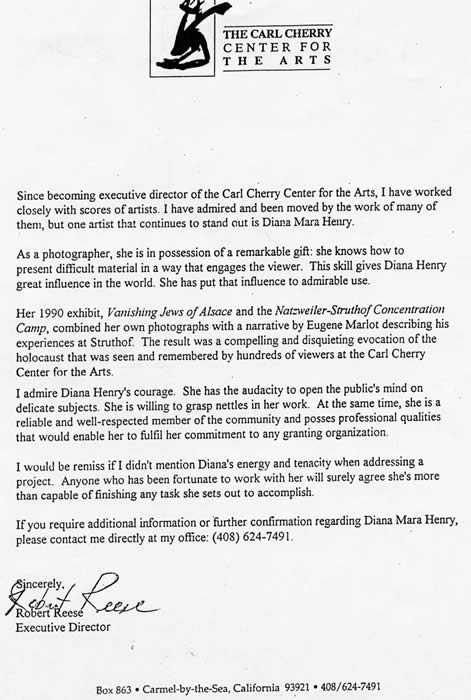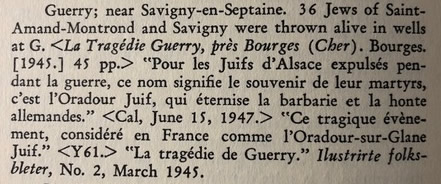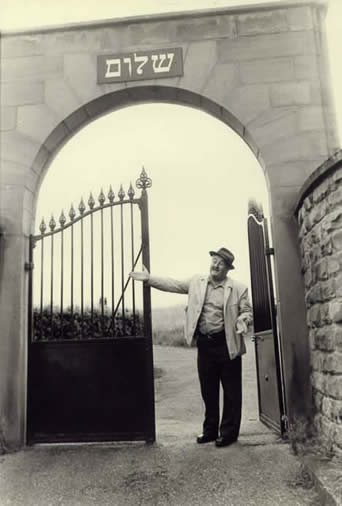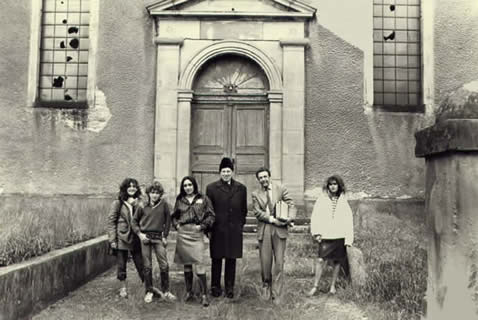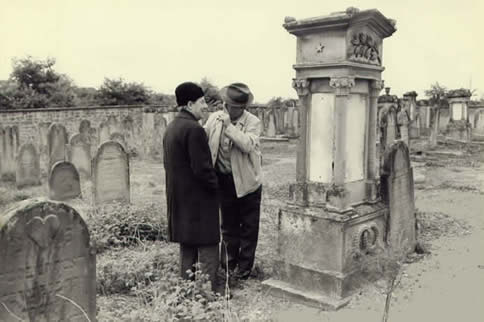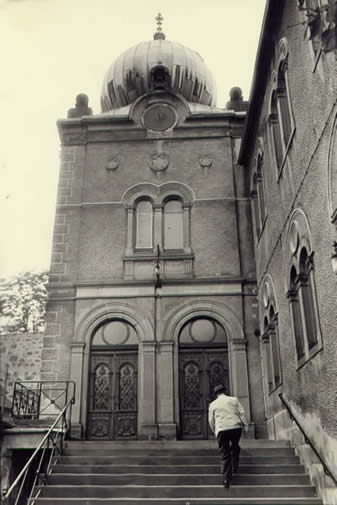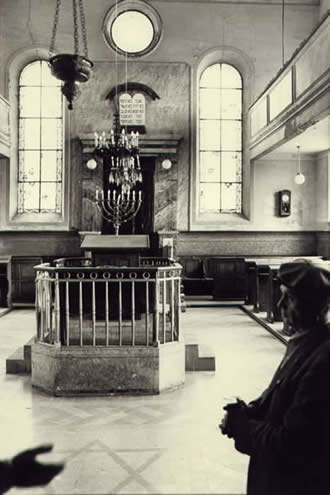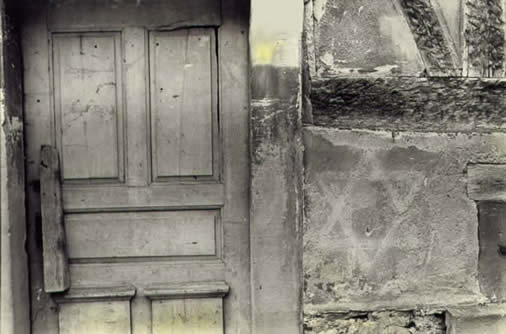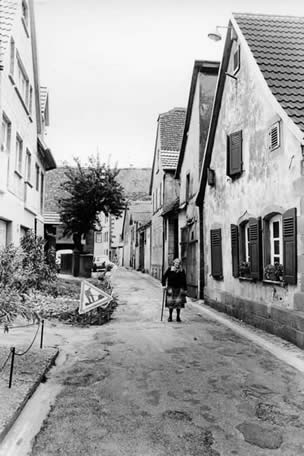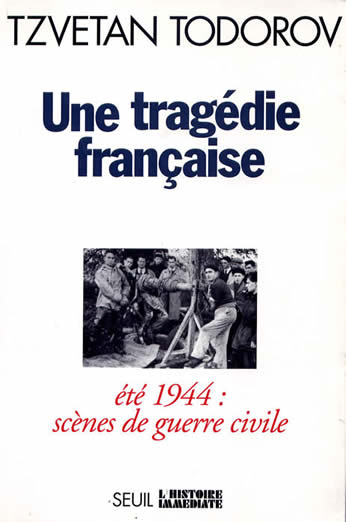 |
"As Allied troops landed in Normandy in 1944, members of the local French resistance in the small town of Saint-Amand-Montrond embarked on an ill-fated attempt to liberate their town....Resistance forces took and subsequently executed hostages; their opponents, the milice - fascist nazi-collaborationist French police - and German soldiers rounded up 36 Jewish adults and children in retaliation and put them to a horrible death..." - from the dust jacket of the US edition, A French Tragedy, by Tzvetan Todorov, published by University Press of New England.
Above, from page 174 of the Analytical Franco-Jewish Gazeteer 1939-1945 with an Introduction to Some Problems in Writing the History of the Jews of France During World War II by Zosa Szajkowski. NY, NY 1966. [Under heading of Department of the Cher] "For the Jews of Alsace expelled during the war, this name signifies the memory of their martyrs, it is the Jewish Oradour, that eternalizes German barbarism and shame."
DMH gave a copy of the Gazeteer to her father on his 74th birthday, May 7,1987. He annotated the title page under the author's name: "mentor and friend of Carl Henry in the 1980s, till his suicide - gave C.H. invaluable help plus his books. C.H. gave this book to the Klarsfelds ( Paris.)" |
The martyrs' corpses being winched from the wells where they were dumped after the victims were shot.This is how our relatives died, having escaped from Alsace and lived peacefully throughout the war. Only Roger Weil, who was in the Maquis (Resistance) and his mother Cora, who ran away, survived. See photos and account of them, below.
Email us:
Diana Mara Henry telling the story, from the American Museum of Jewish History in Philadelphia, 2010
|
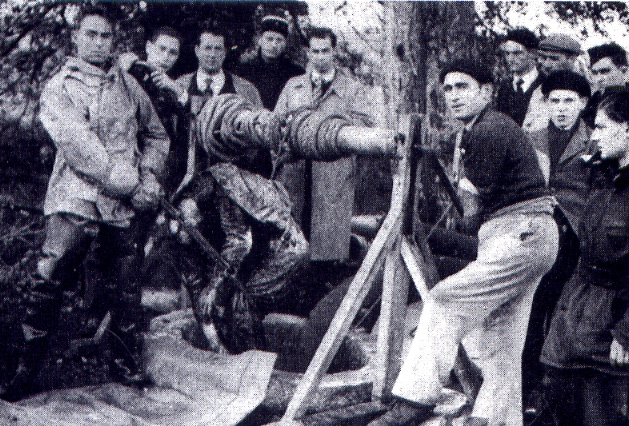 |
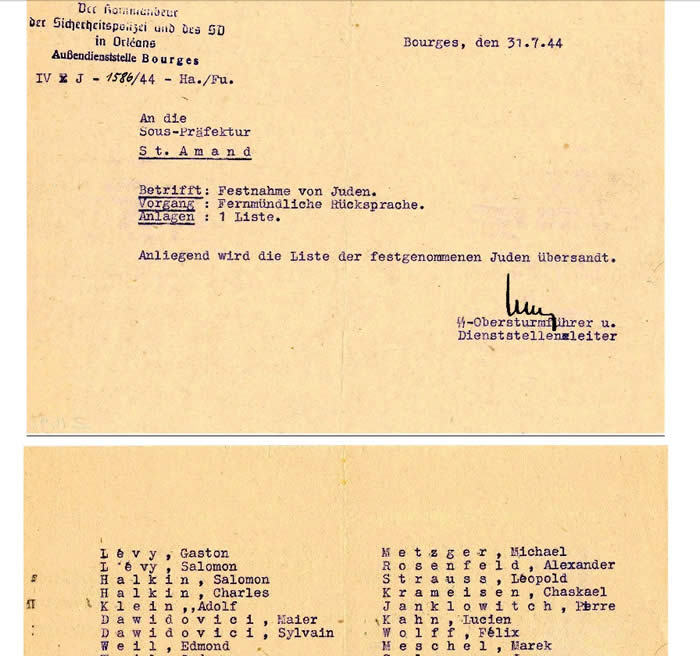
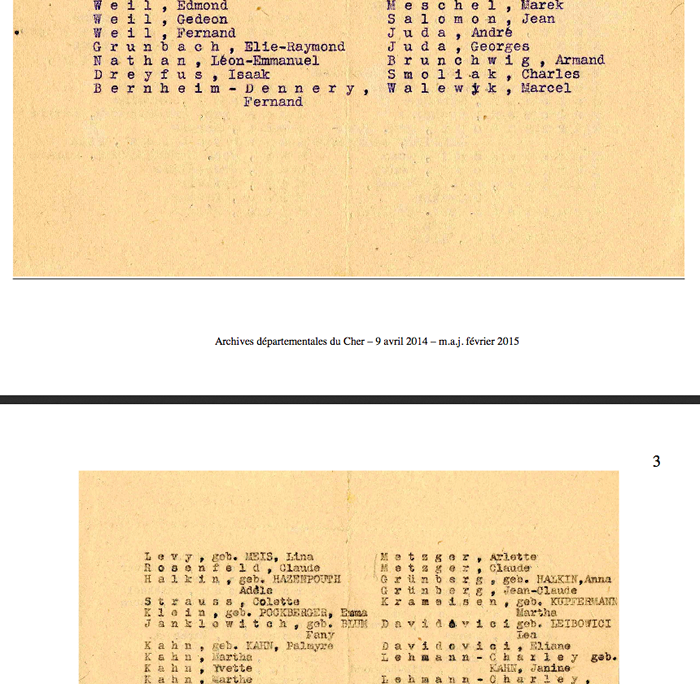
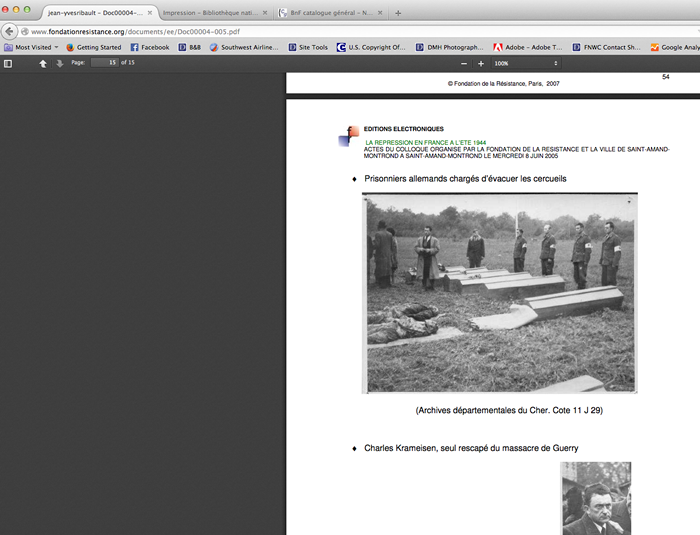
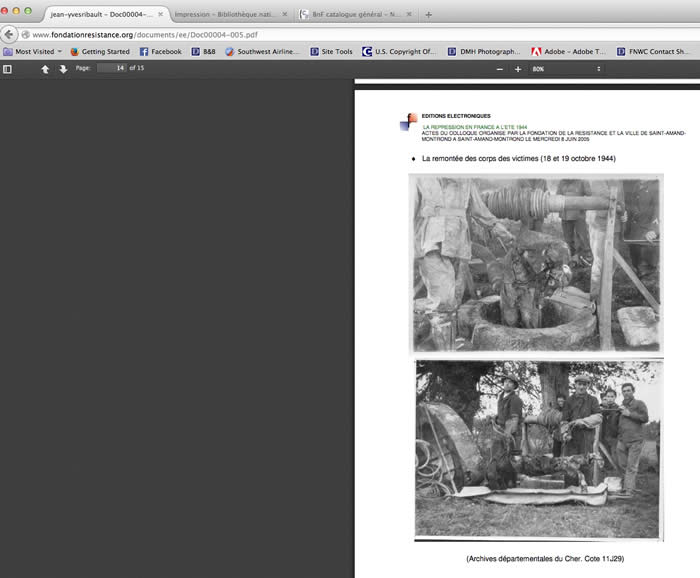
Most of the little towns in Alsace had a couple of hundred Jewish inhabitants before World War II.
Today most have none. See what has taken their place in the one department of Bas-Rhin...
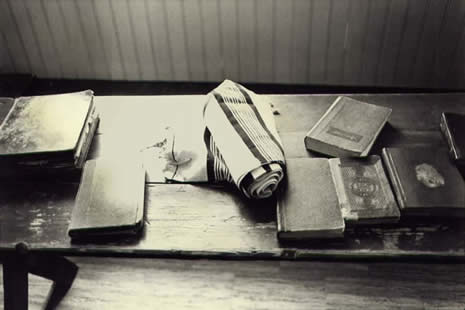 |
In 1985, when these photos were taken, there were less than ten men who remained in Hochfelden to study together, not enough to make a minyan for daily services. Roger Weil, at 65 years of age, was the youngest. Today, Roger Weil is gone and the others too, no doubt. |
Roger Weil, at the gates of the graveyard in Hochfelden, left untouched during World War II.
In 1985, the Bouxwiller synagogue had fallen into grave disrepair. Gilbert Weil, holding plans, is the native-born architect who later restored it and created a magnificent jewel of a museum of the Jewish Heritage in Alsace (Musée judéo-alsacien) that can be visited today and on Facebook!. Carl Henry, an early supporter of the project, is smiling next to him, and a gaggle of local girls joined to have their picture taken...
Below: Roger tells the family story to his American cousin.
|
Roger leading the way up the steps to the Ingwiller synagogue, where he kept the lights on.
Carl Henry, left, and Henry Levy, not - that we know- related, visit the synagogue in Hochfelden Now, the synagogogue has been restoredHappy to be sharing the link to the ceremonies and to another photographer's vision of the synagogue today. |
Roger's home for five generations was marked with a Jewish starby collaborators, in 1940, to tell the Germans which were Jewish homes. All Jews were evicted from Alsace when the Germans overran France in June 1940. The family went to Guerry in the Cher department, where they all were killed by French fascists in August 1940except fo Roger, who had joined the Resistance - the "Maquis" and his mother, who ran away before the round up. The book written about this horrible massacre is available in English as A French Tragedy. All photographs Copyright © Diana Mara Henry / dianamarahenry.com |
Roger's mother, Cora Weil, bids her visitors adieu.
Go to website for Carl Henry's letters home from the European front in WWII, August 1944-Sept. 1945: |
Renovation of the synagogue:
http://judaisme.sdv.fr/synagog/basrhin/g-p/ingwill/renov.htm
History pf the Jews including our family:
http://judaisme.sdv.fr/synagog/basrhin/g-p/ingwill.htm
D'autres rabbins ont vu le jour à Ingwiller : le grand rabbin Honel Meiss né à Ingwiller le 18 août 1846, fils d'Abraham Meiss, commerçant et d'Hélène Franck. Il rentra au Séminaire israélite de Paris en 1866. Il fut rabbin à Nantes de 1873 à 1883, à Nice entre 1884 et 1896, où faisant preuve d'une énergie débordante, il intervint en de multiples secteurs comme aumônier aux armées, comme vice-président du comité local de secours aux Alsaciens-Lorrains et oeuvra à l'ouverture du sanatorium de la Fondation Jacob Plaut à Cimiez pour les tuberculeux juifs sans ressources. Il devint ensuite grand rabbin de Marseille très apprécié de 1904 à 1919. En 1924, il eut le plaisir de prendre la parole dans sa commune natale. Il est notamment l'auteur d'un célèbre recueil de Moschelich (historiettes ou paraboles en rapport avec la vie juive) Choses d'Alsace, contes d'avant-guerre (16) et reçut le prix Montyon de l'Académie française pour sa traduction des Psaumes et le prix Auddifret de l'Académie des Sciences morales et politiques (17).
Honel Meiss' book, Echos des psaumes dans la Torah, is in the family.
En 1936, la communauté était structurée, autour du ministre officiant, Marcel Roth, du président, Mathieu Wolff, du vice-Président, Paul Loeb et des membres de la commission administrative : Joseph Lazarus, Léopold Erstein, Salomon Lévy, Myrtil Wolff et Jules Metzger. Parmi les autres familles, on relevait notamment les noms de Sylvain Jacob, Léopold Bloch, René Wertheimer, Félix Lazarus, Henri Erstein, Maurice Wolff, Salomon Lévy, Henry Uhry, Joseph Haenel, Léon Aron, Jules Netter, René Meyer, Madame Maguerite Lévy épouse Gerson, Joseph Weil, Jonas Kahn, Léonie Bloch, Moïse Eichel, René Wertheimer, Henry Kaim, Gédéon Weil, Madame veuve Léon Meiss (9).
La seconde guerre mondiale achèvera le déclin de la communauté. Les raisons sont les tués (la tragédie des Puits de Guerry où du 24 juillet au 8 août 1944, les corps de 36 personnes ont été jetés vivants dans des puits et morts étouffés sous les pierres et les gravats par la milice de Vichy et la gestapo dont Mina et Salomon Lévy les grands parents de Michel Lévy et Gédéon Weill d'Ingwiller)...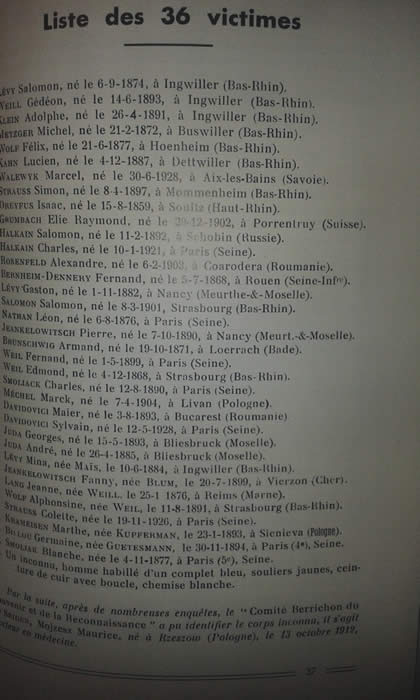
vendredi 8 avril 2011
Pierre Kogan
Chère Madame,
Suite à notre entretien téléphonique, voici ce que je sais jusqu’à présent :
une famille BLOCH, native de Suisse, domiciliée avant 1940 à Strasbourg ?
Edmond ; né 5/9/1900 Lausanne, fusillé à Jarsy (73630)
épouse: Jeanne, née Brunschwig, 2/4/1902 Bâle -déportée 31/7/1944 convoi 77
fils, Michel, 12/8/1930 Strasbourg, convoi 77.
Si je m'occupe maintenant de ces malheureux, c'est que le destin de ce Michel a intrigué un condisciple du Lycée Kleber 1937, Jean Brecheisen, qui possédait une photo de classe et qui est capable de mettre les noms et prénoms sur presque tous les condisciples...:
Jacques Decup, un autre camarade de classe,- se souvenait aussi de ce Michel, comme on peux le lire au dos de son message de 2010, copie ci-jointe.
Mais mes deux camarades se souvenaient d'un Daniel, alors que, d'après l'Etat civil, c'était Michel !
Sur la photo, Michel porte des lunettes et, à sa droite, c'est Jacques Decup !
Enfin, le grand-père, Brunschwig Armand, né le 2/4/1902 à Loerrach (ou Neuf Brisach, in CDJC ), était précipité vivant avec 35 autres juifs (dont un couple de ma famille, Levy Salomon et Meis Mina d'Ingwiller) près de St Amand Montron (18200 = Cher) dans les puits de Guerry par la Milice française et la Police allemande !! C'était en Juillet 44!!
On peut en trouver tous les détails avec Google sur Internet :
« Jean-Yves Ribault (ancien directeur des Archives Départementales du Cher): rapport sur Guerry
La tragédie des puits de Guerry (été 1944) : étapes, rouages et mobiles d’une répression raciale... »
===================================
J'ai recherché ces martyrs au Mémorial de la Shoa à Paris et photocopié recto-verso les Pages de Témoignages établies à Yad Vashem Jérusalem (cf avec Google « Yad Vashem Jerusalem+ Hall of Names »).
La signataire était Simone Guinchard, 13400 Aubagne, soeur de Michel, née en 1926, elle-même rescapée d'Auschwitz.
Memorial CDJC Paris: "Est inscrit(e) sur le Mur des Noms en tant que Simone BLOCH né(e) le 09/05/1926 à STRASBOURG, déporté(e) par le convoi n° 77 au départ de Drancy le 31/07/1944.
Simone a une autre soeur, Lison, également rescapée d'Auschwitz...
Memorial CDJC Paris: "BLOCH Lison né(e) le 03/03/1928 à STRASBOURG deporté(e) par le convoi n° 77 le 31/07/1944 à Auschwitz
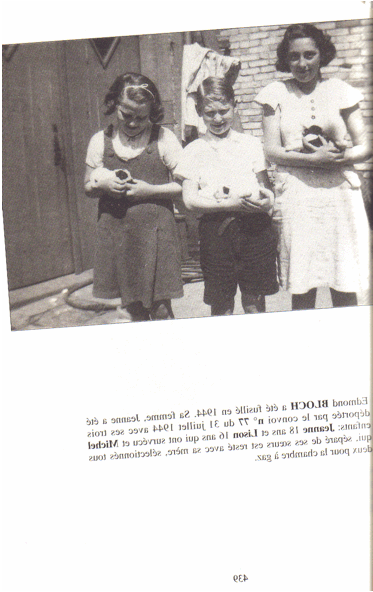
mes remarques:
Ni Simone ni sa sœur, Lison, n'ont établi pour elles-même de POT (modèle rescapés)
Je ne sais pas si elles ont demandé des actes de décès pour les membres de leur famille
Pour BLOCH Edmond, Yad Vashem a traduit le lieu de décès en tant que Jassy, Moldova, Romania et domicilié l'assassiné à Saverne, ce qui était impossible pour un Juif, en 1944 !
Le vrai lieu de décès se trouvait à Jarsy en Bauges (73630) France !.
Cordialement,
